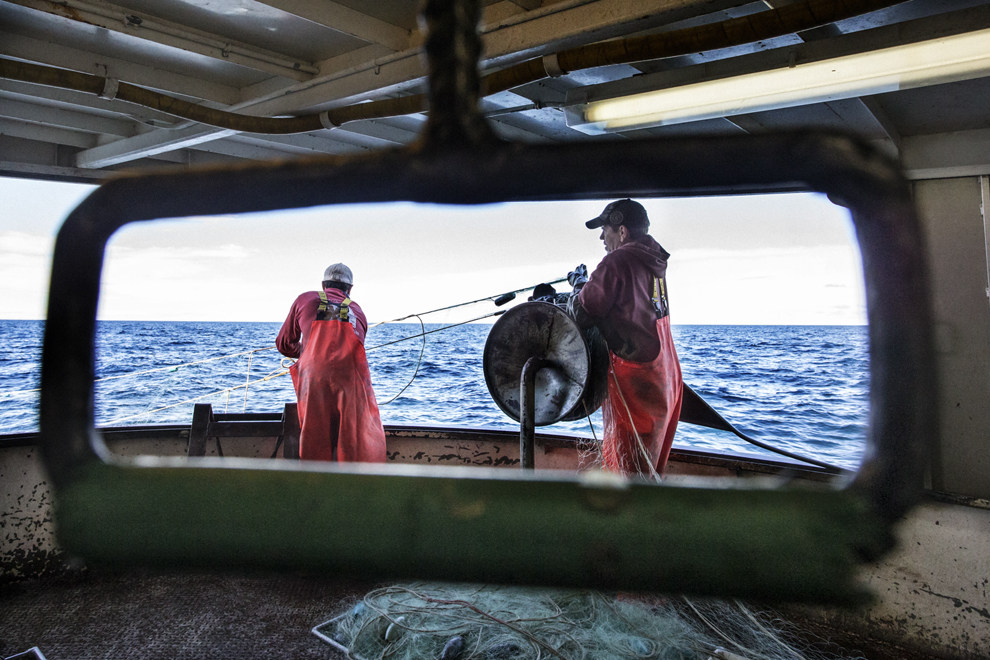Industry seeks support from government to continue
BURNT ISLAND – The Ontario Commercial Fisheries Association (OCFA) is looking to the government for financial and marketing support of the industry as it is feeling the effects of COVID-19 as restaurants across North America have been closed by city, provincial and state ordinances to flatten the curve. The economic and social consequences have devastated Ontario’s commercial fishery.
“Everything has been shut down and we can’t market our fish,” said George Purvis of Purvis Fisheries Ltd., based in Burnt Island on Manitoulin. “So instead, everyone in our industry has fish stocked in freezers,” he said, pointing out commercial fishers had been garnering 300,000 pounds of fish in a day on Lake Erie this spring. “The industry had been expecting big things this spring.”
Mr. Purvis explained, “our concern as an industry is that over the years the government has favoured the aquaculture industry by providing funding toward marketing their fish, and our industry has received nothing. We take part in an annual lunch on the lawn with the provincial government at the Parliament buildings, and while they (government officials) are eating commercial fishery products, all they want to do is talk about aquaculture and that industry, not commercial fishing.”
“Supermarkets sell very little of our product, but many sell aquaculture fish products,” said Mr. Purvis. He said that with many restaurants being closed, “the only market we have right now is New York and Chicago.”
Mr. Purvis said, “no, we are not fishing (this spring), we are having to buy our fish and truck them out to the US and markets to fill the gaps.”
The OCFA represents the interests of commercial fishers and fish processors who collectively are responsible for over 1,100 jobs in the province of Ontario.
The COVID-19 epidemic has devastated Ontario’s commercial fishery. The OCFA’s latest member engagement survey, conducted on March 27-29, highlights the crippling effects faced by operators. The OCFA release points out that most operators have experienced a near 100 percent revenue decline, there is no demand for freshwater fish, and the processors’ long-standing distribution networks have dried up.
“Supermarket fish counters have been closed to minimize customer interaction. Bars and restaurants have been shuttered throughout Canada and the United States,” the OCFA notes. “Almost 100 percent of Ontario’s fishing fleet remains tied to the dock, as the fishermen have no place to sell their catch. The start of spring fishing season will be delayed, with a strong possibility that the season will be completely lost,” the release continues. “The industry is forecasting 80 percent of employees have or will be laid off. For most OCFA members, the recently announced three-month wage subsidy support will only extend operations by a few months. Without additional support, more layoffs will follow, leading to business closures and bankruptcies.”
The economic impact on commercial fishers and processors has the potential to lead to disastrous social consequences for many small towns in Ontario. For local communities, the commercial fishery represents one of the most significant forms of employment, notes the release. “This is about survival,” said Jane Graham, executive director of the OCFA.
“The (OCFA) is looking for financial help from the government to market our fish. The current support is not to the extent it should be,” said Mr. Purvis.
The OCFA release explained, “the OCFA and its members are calling on support from Canadians as well as all levels of government. The association has identified four areas of support urgently needed by members: an extension on the wage subsidy to a minimum of three months after the stay and shelter orders are removed; customized financial solutions from government and financial institutions that recognize the uniqueness of the industry. $40,000 loan programs and principal deferrals will not be enough to save companies and jobs, members are requesting relief on royalty payments for the 2020 catch and possibly longer depending on when fishing resumes. Members urge Ontarians to buy local and consider supporting a key industry when choosing what protein to buy.”
The OCFA release adds, “as the health crisis continues to build, the safety of our fishermen, employees, suppliers, processors, markets and customers remains our number one priority. However, the resulting economic fallout that is gripping the fishery will have far reaching implications for all industry stakeholders for months and years to come.”
The Ontario commercial fishing industry has been referred to as the freshwater fish capital of the world. There was a recognizable commercial fishery before Europeans colonized what we now call Ontario.
In 2018, the commercial fishing industry harvested 24 million pounds of fish with a landed value of more than $44 million and contributed $234 million to the Canadian economy.
Ontario’s commercial landings represent over half of Canada’s total freshwater catch. The majority of fishers are small, independent businesses, many family-owned and multi-generational.
Over 80 percent of Ontario’s processed fish production is exported with the majority into foodservice in the United States, which has evaporated overnight as a result of the COVID-19 pandemic. According to the National Restaurant Association, since March 1, the US restaurant industry has lost more than $25 billion in sales, and roughly 50 percent of restaurant operators anticipate having to lay off more people in April. The National Restaurant Association further forecasts the industry will sustain at least a $225 billion loss.
In regards to the impact of COVID-19 on the industry, an industry survey was conducted March 27-29 to assess the impacts on operations. Seventy-four percent of respondents are worried about a lack of cash flow to cover expenses; 48 percent are facing a permanent business closure. The number one concern among fishermen respondents was losing their business. Eighty-eight percent of respondents have had to reduce their level of employees or anticipate they will need to do so. The industry forecasts 80 percent of employees will be laid off, representing jobs in rural communities.





